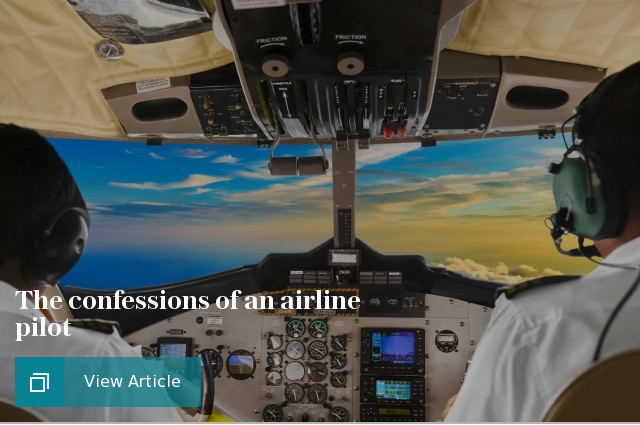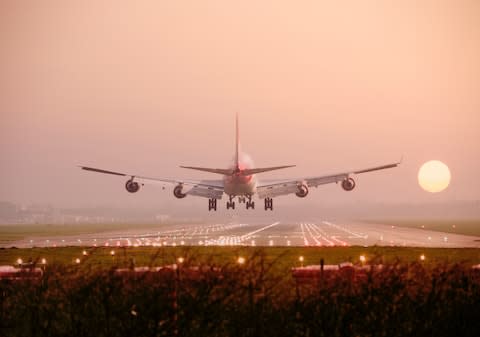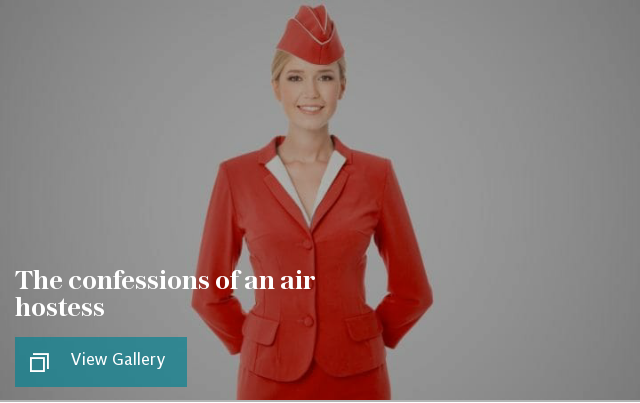Zero stress and an £80,000 salary: 20 things I've learned since becoming an air traffic controller

Carlos Beneto Turner has worked at Heathrow Airport as an air traffic controller for almost seven years. Here, he explains some of the surprises – and some of the more commonplace situations – that come as a regular part of a frequently misunderstood job...
1. It’s a role that, like astronaut or train driver, little boys dream of doing
I was born and grew up in Spain. But half my family is from the UK, and my grandfather was in the RAF. Whenever we used to come and see him, we used to fly into Heathrow. I was already plane-mad then. I would see the control towers as we came past, and think that it would be a nice job to have. So, from when I was 10, that was what I wanted to do.

2. The application process is intense...
I applied via the NATS (National Air Traffic Services) website. There are three phases to the selection process. The first is a series of spatial awareness and mental agility tests, followed by a personality test to gauge how you react in a given situation. The second is a more complex version of phase one – more geared towards air traffic control. The third phase is a full-on interview – and a group exercise to see how you work as part of a team.
3. …and you go to college
If you are successful in the third phase, you are offered a place at the NATS training college. That’s where the hard work begins. Lots of presentations, briefings and simulator exercises.
Time off is really important. When I’m on my break, I’m not even allowed to check e-mail. You are supposed to disconnect your mind completely from air traffic
Prior to starting, you are allocated a discipline – either working in an airport tower, or at a more remote control centre. I took the airport route. After college, you start your training at your destination airport. This takes quite a while. I was at the college for seven months – then it took me an additional 13 months to qualify at the Heathrow tower.
4. You have a helping hand for quite a while
Once you’ve arrived at the airport, you do an initial simulator training programme to get you up to speed. But the real on-the-job training is the guidance of your instructor. They can always override you over the radio. On the first day, the instructor does most of the transmissions for you. But they lead you to a point where they step in less and less. The obvious goal is that by the time of your final assessment, they won’t need to step in at all.

5. Your final assessment is exceedingly stressful…
All the work you’ve done to that point depends on that one assessment. It’s like a driving test. You have to know every procedure. And you can fail. It’s rare but there are instances.
6 …but your first day as a qualified controller is quite mundane
The first day feels a bit different, as you don’t have that safety net of your instructor. You are operating under your own licence for the first time. But from a practical point of view it is no different. You already feel prepared for it, you never feel you are behind the curve.

7. The job isn’t stressful. It really isn’t
It isn’t about stress. It’s about pressure. Some might say that those words mean the same thing, but I don’t think that’s the case. It’s definitely a job which keeps you on your toes, and you can’t afford not to pay attention. But it isn’t stressful.
People have this idea that it’s all split-second decisions, but there is a lot more time to do things than people think. There are miles of separation between aircraft
People are always surprised when they come to the tower and see how calm it is. They imagine this really hectic place where people are screaming and throwing things at each other. That’s an image that has perpetuated itself over the years. But it’s a serene space, the control tower.
8. The job is nothing like the movies
There was that film a few years ago with John Cusack and Billy Bob Thornton, Pushing Tin. It has nothing to do with reality. It’s a fun film to watch – but I’ve always thought that the image it, and other fictional portrayals, sends out – of air traffic control being something that is hectic and permanently on edge – is sad and unhelpful. I think this probably dissuades potential applicants; people who would otherwise be good controllers.
9. Taking off is more difficult than landing
There is more to consider with departures than there is with arrivals. Think of the typical image of a line of planes coming in over London. At Heathrow, they are put into the queue by our control centre in Swanwick. They are transferred to us once they are in that line. We just have to make sure the spacing is correct, and take any corrective action if someone misses an approach. It’s very routine doing arrivals. Whereas with departures, you have to make sure you establish the correct order. It’s more hands-on. It’s one of the key decisions – getting the departure order right – which makes the airport tick. If aircraft are not departing at the rate they should be, that has a knock-on effect – stands not being available, delays etc. It takes far longer to be proficient at departures than it does arrivals.

10. The big planes can make the little ones shake
Aircraft are of different sizes, so cause different levels of turbulence behind them at take-off. You have to take into account this effect on a smaller aircraft following a larger one, and apply extra time before you clear that aircraft for departure. We also separate planes by route – ideally a northbound departure would be followed by a southbound departure.
11. The most common problems are the little ones
Such as when an aircraft comes back to the gate after pushing off – because someone is unwell or needs to get off, or because of a technical issue. But this is an inconvenience rather than a large difficulty. Rerouting a plane on its way to the runway is part of the job.

12. Bad weather can make for an exhausting day
Aircraft are very resilient to weather, but we obviously have to deal with conditions that are testing. It can be disruptive when we have storms in the vicinity. Aircraft don’t like flying through storms, so you have to think a lot more. Planes normally follow standard departure routes, but when the route goes straight through a storm you need to reconsider. So you have to coordinate alternative routes with your radar colleagues. Strong wind days can be interesting – particularly when you get cross winds, and aborted landings happen.
13. An aborted landing is nothing to worry about
Passengers perceive a missed approach – as we term them – as a case of something not being right from a safety point of view. But it’s a daily occurrence. And if your plane is going around again, it’s a standard procedure which is completely safe. There’s a good reason for it to be happening. People should never be concerned about a missed approach.

14. You have to be ready for anything
I’ve been lucky. I haven’t had to deal with any major emergencies in my career. The worst incident was probably a 767 which landed and one of its brake discs shattered. I had to get the fire service out to ensure the aircraft was still safe – the remaining brakes being hot after landing. The biggest workload in that situation was having bits of brake disc on the runway, so it was no longer safe for landings. That’s when you start having to send the next arrivals around, so you might have two or three missed approaches in a row.
15. Time moves slowly in the control tower
There is a lot more time to do things than people think. There are miles of separation between aircraft. People have this idea that it’s all split-second decisions, but between sending one plane around and having to deal with the next, you have lots of time to think about your next step. It’s obviously a more high-pressure situation if you have to send in the fire service. But in reality you have lots of time to think “I’ve done this, what’s next?”
16. Time off is really important
At Heathrow, we can only operate for up to 90 minutes at a time – and then we have to have a minimum half-hour break. When you’ve had a busy session, your brain knows that it has done a hard stint of work – even though you’ve been in a comfy chair. We have comfortable facilities for breaks. And they have to be responsibility-free breaks. I do some on-site office work too. But when I’m on my break, I’m not even allowed to check e-mail. You are supposed to disconnect your mind completely from air traffic. We have quiet rooms where we can go and watch a film, read a book or just have a coffee. We take having breaks seriously – you want your brain as fresh as possible when you go back up.

17. Your work ends when your day ends
Once your shift is done, it’s done. There is no additional work to worry about. You hand over your position to the incoming watch, grab your coat and go home. Which is one of the appeals of the job for a lot of people. You don’t have to take any of it home with you.
18. Everyone speaks excellent English
All pilots are required to speak an ICAEA – International Civil Aviation English Association – level of English. Some nationalities – not from a lack of knowledge, but from pronunciation – can be a little harder to understand. But you get so used to dealing with people from all over the world that it’s never an issue. My first language is Spanish!
19. You don't need perfect eyesight to be an air traffic controller
I'm lucky – I do have 20/20 vision, but there are plenty of people in the tower who don’t. It isn't an impediment. That would be impractical. Lots of people in the unit wear glasses.

20. Being an air traffic controller makes you happy on planes
I’m more than comfortable on a plane. It’s just like going on a bus. It’s more interesting for me, especially when I go to other airports. I like to see how they operate. When you’re a controller, you can figure out quite a lot of things just looking out of the window.
Interview by Chris Leadbeater

